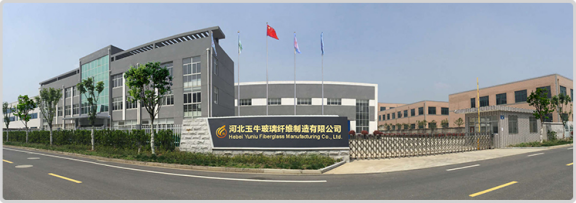Views: 24 Author: Site Editor Publish Time: 2021-10-12 Origin: Site
RTM closed mold glass fiber reinforced plastic mold design principles:
The surface of the FRP mold must be flat, smooth, free of cracks and pinholes, and the gloss must be above 95, and the surface roughness must be less than 10μm to ensure the excellent surface quality of the product.
The counter-mold is composed of male and female molds, and high precision is required through the cooperation of positioning pins, so as to avoid misalignment and affect the dimensional accuracy of the product.
The mold should be equipped with sufficient strength, rigidity and surface hardness. The mold must be able to withstand the combined effect of its own weight and product weight, as well as the vibration and live load during the production process. For large glass fiber reinforced plastic products, in addition to meeting the strength requirements, stiffness is also important to prevent mold deformation, which affects product quality and the service life of glass fiber reinforced plastic molds. The surface hardness of the mold should reach a Barcol hardness of 40 or more to reduce the force damage of the mold during demolding.

The key factor of mold design: how to demold. Demoulding should be convenient and easy, and the glass fiber reinforced plastic mould should not be damaged during the demolding process of the product. Therefore, the radius of curvature of the corner of the mold should be as large as possible, and the radius of curvature of the inner corner should not be less than 2mm. The overall mold should be designed with a draft angle. If necessary, it should be demoulded by water pressure and air pressure. For the hand-laid glass fiber reinforced plastic molding process, generally the combination of ejection and air release is used for demolding. For glass fiber reinforced plastic products with complex shapes, sometimes it is necessary to consider the design of partial assembly combined molds, side core pulling and other auxiliary structures.
Mold manufacturing materials should have sufficient low shrinkage and thermal stability to prevent resin curing exotherm and mold deformation caused by external heating and curing, which will affect product quality and FRP mold life.
In short, the construction of any FRP mold is a trade-off between mold physical properties, material cost and construction time. Usually, time, energy and money are invested in the design stage of FRP molds, but potential problems in production can be avoided or reduced in the future.

How to release the mold from the original mold and the molding process of subsequent parts will affect the overall design and structure of the lightweight RTM glass fiber reinforced plastic mold. Some general glass fiber reinforced plastic mold design methods are as follows:
1. Reasonable selection of the parting surface should not only facilitate demoulding and not produce demoulding sheath, but also help the product profile to be regular and complete. In order to facilitate product demolding, a certain degree of demolding slope should be considered when designing the overall mold. For glass fiber reinforced plastic molds, the general demolding angle is at least 1°. For parts that are difficult to demold, air desorption and ejection devices must be installed at appropriate positions.
2. Adopting the principle of three-point positioning, one point is the center positioning, so that the upper and lower molds are on the same center line; the other two is the use of positioning pins to ensure the matching accuracy of the mold clamping.
3. According to the requirements of specific products, determine the appropriate thickness and structure of FRP molds. The polyester mold should have sufficient strength, rigidity and service life. The thickness of the mold should be considered based on the thickness, geometry, and size of the product. Generally, the thickness of the mold is 3-4 times the thickness of the product.
4. According to the use conditions of the mold, the structure of the FRP mold is generally designed as a composite structure of gel coat layer/transition layer/structural layer/reinforcement layer, and the type of layup depends on the specific product.

Hebei Yuniu Fiberglass Manufacturing Company Limited is a fiberglass material manufacturer with over 10-year experience, 7- year exporting experience.
We are manufacturer of fiberglass raw materials, Such as fiberglass roving, fiberglass yarn, fiberglass chopped strand mat, fiberglass chopped strands, fiberglass black mat, fiberglass woven roving, fiberglass fabric, fiberglass cloth..And so on.
If any needs, please contact us freely.
We will do our best to help and support you.
#fiberglass #manufacturer #Exporter #factory